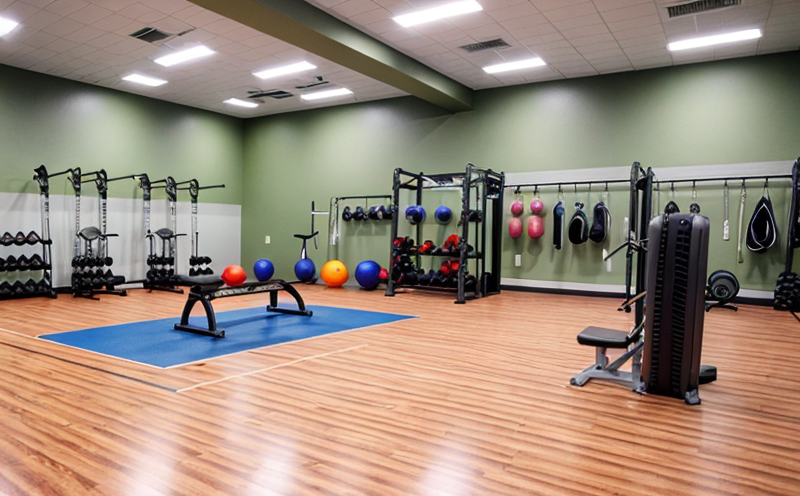Strap Strength Testing in Protective Gear
The strap strength testing of protective gear is a critical component in ensuring that products meet the rigorous safety standards and performance requirements set by regulatory bodies worldwide. This service evaluates the durability and reliability of straps used in various types of protective equipment, including helmets, harnesses, belts, and other components designed to safeguard individuals against potential hazards.
Straps are essential elements in many pieces of protective gear because they must be able to withstand the stresses imposed during use without failure. These stresses can vary widely depending on the type of activity or environment for which the gear is intended. For instance, a strap used in a safety harness designed for construction workers may experience different load conditions compared to one used in a climbing helmet.
The testing process involves subjecting the straps to specific types of stress and strain until they reach their breaking point. This allows manufacturers to understand how much force their products can handle before failure occurs, ensuring that users have sufficient protection under normal operating conditions. Additionally, this information helps identify any potential weaknesses in design or manufacturing processes early on.
In addition to assessing the physical properties of straps themselves, this service also examines factors such as material selection and construction methods that influence overall performance. By incorporating these aspects into the evaluation process, labs like ours can provide comprehensive insights into every aspect of strap strength within protective gear.
When selecting appropriate standards for strap strength testing in protective gear, it's important to consider both industry-specific guidelines and general safety regulations applicable across multiple sectors. For example, ASTM F2891-18 provides detailed instructions on how to conduct tensile tests on webbing materials used in personal protective equipment (PPE), while EN 361 covers performance requirements for body-worn fall arrest systems.
These standards ensure consistency and accuracy when performing strap strength tests, allowing manufacturers to compare results between different batches or suppliers easily. They also help guarantee that the final product meets all necessary safety criteria before being released into the market.
Applied Standards
- ASTM F2891-18: This standard specifies methods for testing webbing materials used in personal protective equipment (PPE), including straps, belts, and other components. It covers both static tensile strength tests as well as dynamic loading scenarios.
- EN 361: This European Norm sets out the performance requirements for body-worn fall arrest systems, which often include multiple straps to distribute loads evenly across a user's torso or limbs during a fall. It includes criteria related to breaking strength, elongation at break, and resistance to abrasion.
The application of these standards ensures that strap strength testing remains consistent with industry best practices while maintaining high levels of safety and reliability in protective gear products.
Why Choose This Test
- Enhanced Safety: By rigorously examining the tensile properties of straps, this test helps ensure that they will not fail under expected loads, thereby enhancing wearer safety.
- Informed Design Decisions: Manufacturers can use the results from these tests to refine their designs and improve future iterations of protective gear.
- Regulatory Compliance: Ensures adherence to relevant international standards like ASTM F2891-18 and EN 361, which are essential for meeting regulatory requirements and avoiding costly recalls or legal issues.
- Improved Quality Control: Regular testing allows companies to monitor the quality of their production processes continuously, identifying any deviations early on so corrective actions can be taken promptly.
For quality managers, compliance officers, R&D engineers, and procurement personnel involved in developing or sourcing protective gear, this service offers valuable data that directly impacts product performance and user safety. It provides a clear picture of the mechanical integrity of straps within various types of protective equipment, helping stakeholders make informed decisions based on objective evidence.
Environmental and Sustainability Contributions
The strap strength testing in protective gear also has implications for environmental sustainability by promoting more efficient use of resources. By ensuring that straps are designed to meet strict performance criteria without excessive material usage, manufacturers can minimize waste throughout the production lifecycle.
- Eco-friendly Materials: The selection of sustainable materials that still perform well under rigorous testing conditions is crucial for reducing environmental impact.
- Energy Efficiency: Minimizing energy consumption during manufacturing and processing improves overall sustainability efforts, aligning with broader corporate goals related to carbon footprint reduction.
In addition, conducting thorough strap strength tests helps extend the useful life of protective gear, leading to less frequent replacements and lower disposal rates. This contributes positively toward achieving long-term environmental objectives while supporting economic efficiency for end-users who rely on such products regularly.





